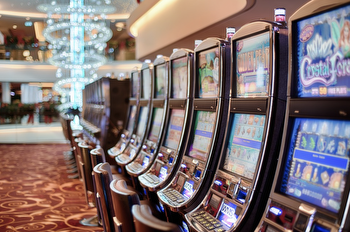The Science of Slot Machines: Understanding RNGs and Payback Percentages

When it comes to online casinos, slot machines have been a cornerstone of the industry. They’re able to captivate players with their colorful reels and tantalizing potential for big wins.
However, if you look beneath the surface, there's a complex science at work there. It ensures that every spin is random, and there’s no chance to predict an outcome. It’s the same for any gambling site out there, even forsame-day payout casinos.
That’s why today’s article unravels the mysteries of slot machines and focus on two critical elements. Read on to take a closer look at what these are and how they work.
Random Number Generator
The reason why modern slot machines are considered fair and free from any tampering is because of the Random Number Generator. It’s a system that generates a sequence of numbers at random. These numbers can be in the range of thousands to millions in a single second. These numbers correspond to the positions of the symbols on the reels.
The reason why RNG is so good at what it does is because of its unpredictability. It has been designed in a way that ensures each spin is entirely independent of previous results. So, outcomes of the past have no bearing on the future. And as it’s the same for every user, slot machines are 100% fair.
Understanding the Algorithm
To understand how RNG works, it’s necessary to go deeper into the concept of algorithms. It has been meticulously designed in a way that provides truly random results. This was all done to ensure that slot machines were a fair and transparent casino game.
Software providers invest a considerable amount of time and resources into robust algorithms for their games. A rigorous round of testing and auditing procedures are held before launching a game to verify their effectiveness.
Payback Percentages
There are quite a few topics to talk about when it comes to payback percentages. Read on to take a closer look at those.
Return to Player
RTP must have been one of the details that you must have noticed on every slot review out there. If you never knew what it meant, today’s your lucky day!
To put it in simple terms, RTP is the percentage of money that a slot game will pay back to the players over the long term. The keyword, in this case, is “long.” That’s because there’s no way to tell how long it might take to get your money back.
RTP percentages usually range anywhere from 90-98%. The industry standard for any slot machine is considered to be around 96%. Anything over this is considered a safe and beginner-friendly slot.
But what does this percentage look like in actions? Here’s an example to help you understand. Imagine that you wagered $100 on a slot with 97% RTP. Theoretically, as you keep playing the slot, you should get back $97 from the slot machine in winnings. So, technically, you’re only risking $3.
However, it’s not as simple as it sounds. While the RTP percentage is true and tested, it’s done for millions of simulated spins. And since RNG dictates that the outcome of every spin is random, there’s no telling how long you’ll need to play to recover that $97.
The House Edge
If we’re talking about RTP, it’s also necessary to talk about house edge. It’s the exact opposite of RTP. If return to player is your advantage, the house edge represents the casino’s advantage.
The house edge won’t be mentioned with a slot. But you can find it as the difference between 100% (total return) and the RTP. For example, a slot with a 95% RTP has a house edge of 5%.
The more the house edge is, the worse it is for you. That’s why it’s always recommended for players to go for a slot that has a high RTP and low house edge. This guarantees that a player doesn’t end up losing a lot of money when playing the game.
Volatility and Variance
Lastly, it’s time to talk about the volatility. You might also know it as variance. It’s a metric that’s used to describe the relationship between potential payout and hit frequency. The higher the volatility, the bigger the wins. But it also means you won’t be winning as often.
On the other hand, a low volatility slot is where you’ll get a winning hit most of the time. However, the payout that you will get from those wins will be very little.
This is why, when choosing a slot, it’s recommended for players to think about the volatility based on their playstyle. If the gameplay is the main focus, a lower volatility would work the best.
On the other hand, a higher volatility slot is perfect for gamblers chasing after huge wins like the players that you can read about onDallasnews.com.
Final Thoughts
The underlying science behind the game acts as a contributing factor towards the fun of the game. For someone who’s looking to understand slot machines to better enjoy it, they’ll need the concepts discussed here. This article has aimed to simplify and explain those to you. Hopefully, it’s a good start to helping you comprehend these complicated topics.

































